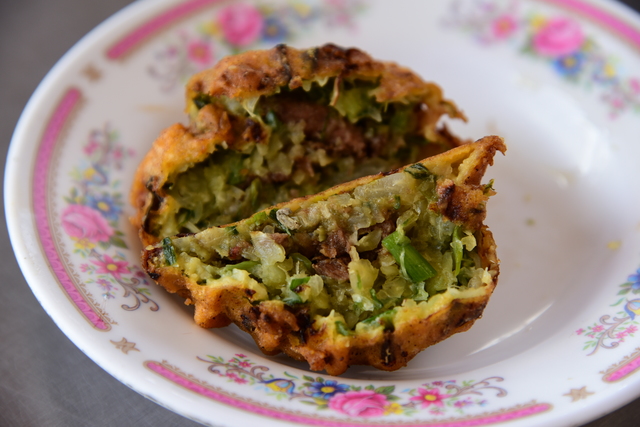Guo Gou Miao Kou Oyster Omelette Introduction
The children who have moved away from Guogou, the daughters who have married out, or the fellow villagers striving abroad, all eagerly return to their hometown and visit the "Temple Mouth Oysters" stall in the yard of the Zhuang Miao Jiande Temple. They order oyster omelets, meat omelets, or fried cakes to savor the hometown flavors they have longed for while away. Some even stop by the stall to have a couple of pieces of fried cakes or oyster omelets before carrying their luggage through the front door. "Temple Mouth Oysters" has become a symbol of nostalgia for the people of Guogou. The oyster omelet or meat omelet, known locally as "Kujia Die," originated from the stall's founder, Tsai Wu Hsiu-Chun. When she first started the stall, Taiwan's economy was generally poor, and oysters or pork were scarce and considered expensive ingredients that most could not afford. Thus, the batter made from a mix of flour and bean flour was filled only with cabbage, leeks, and ginger, without oysters or meat, hence the name "Vegetable Omelet." Tsai Wu Hsiu-Chun would fry the "Vegetable Omelet" longer than usual using lard, which was not frequently changed, making the resulting “Vegetable Omelet” crispy, crunchy, and dark, imparting a bitter taste. Therefore, everyone referred to it as "Kujia Die," a name that has persisted to this day. Although lard is no longer popular and they no longer fry for long, and the oil is changed daily, the older generation still fondly calls it "Kujia Die." As Taiwan's economy gradually...



























